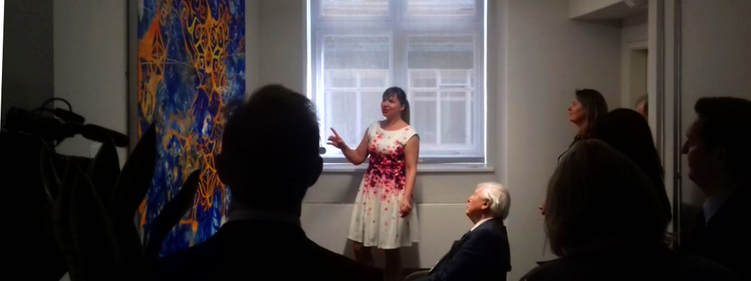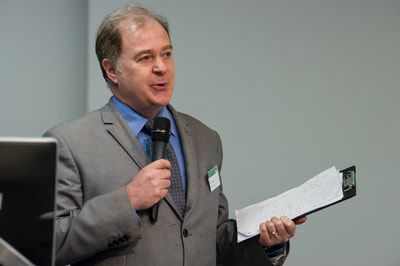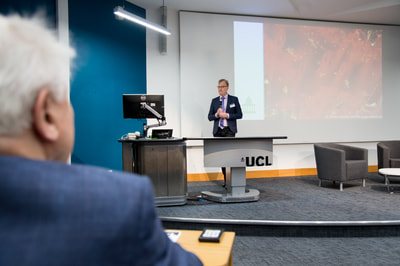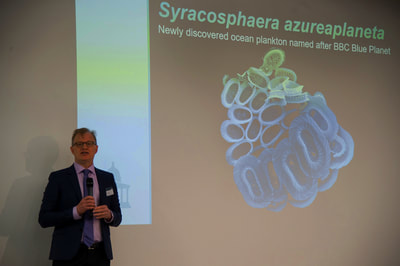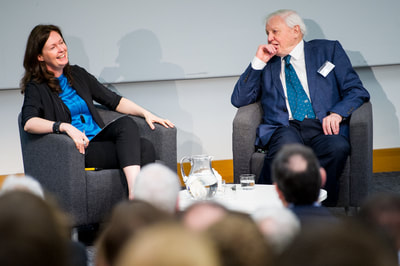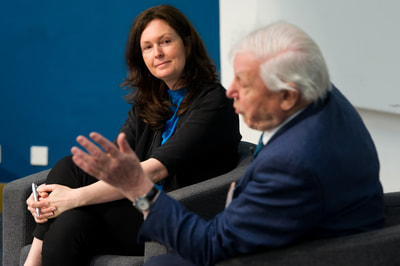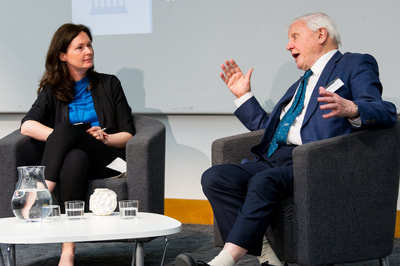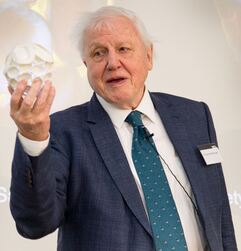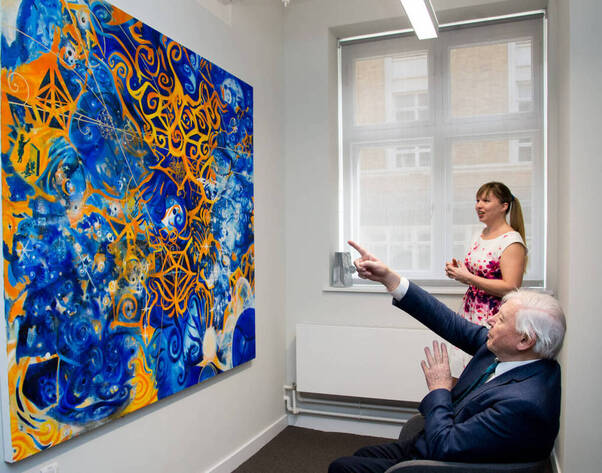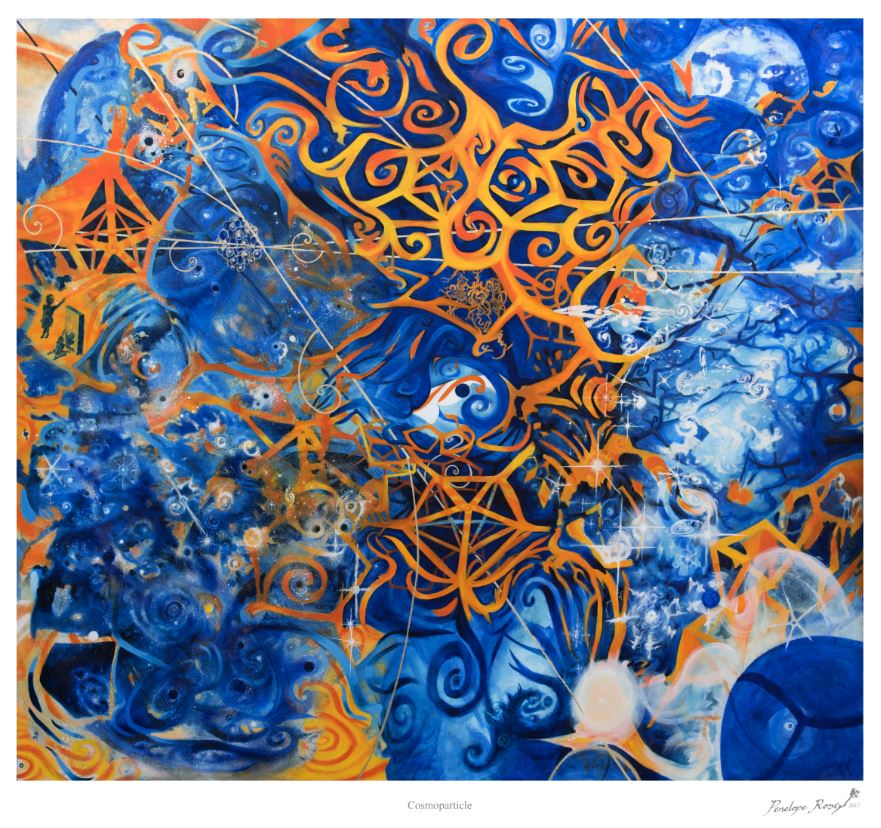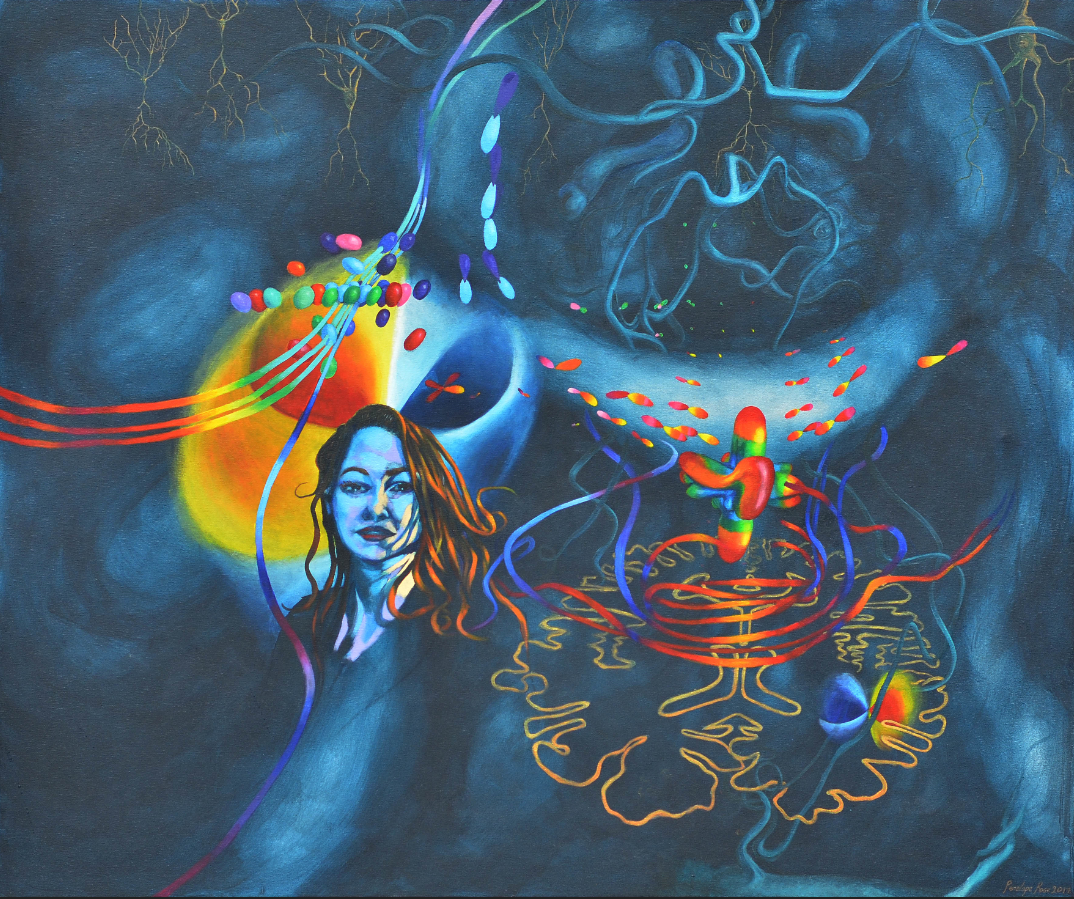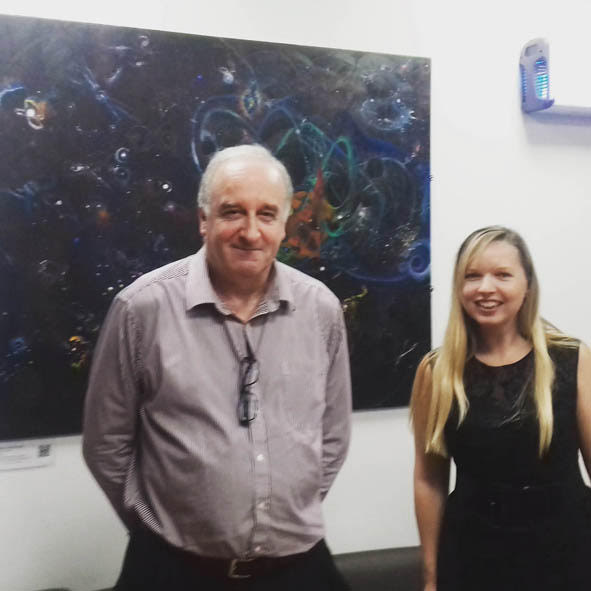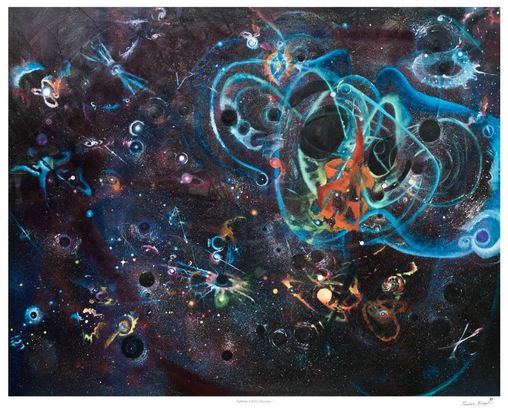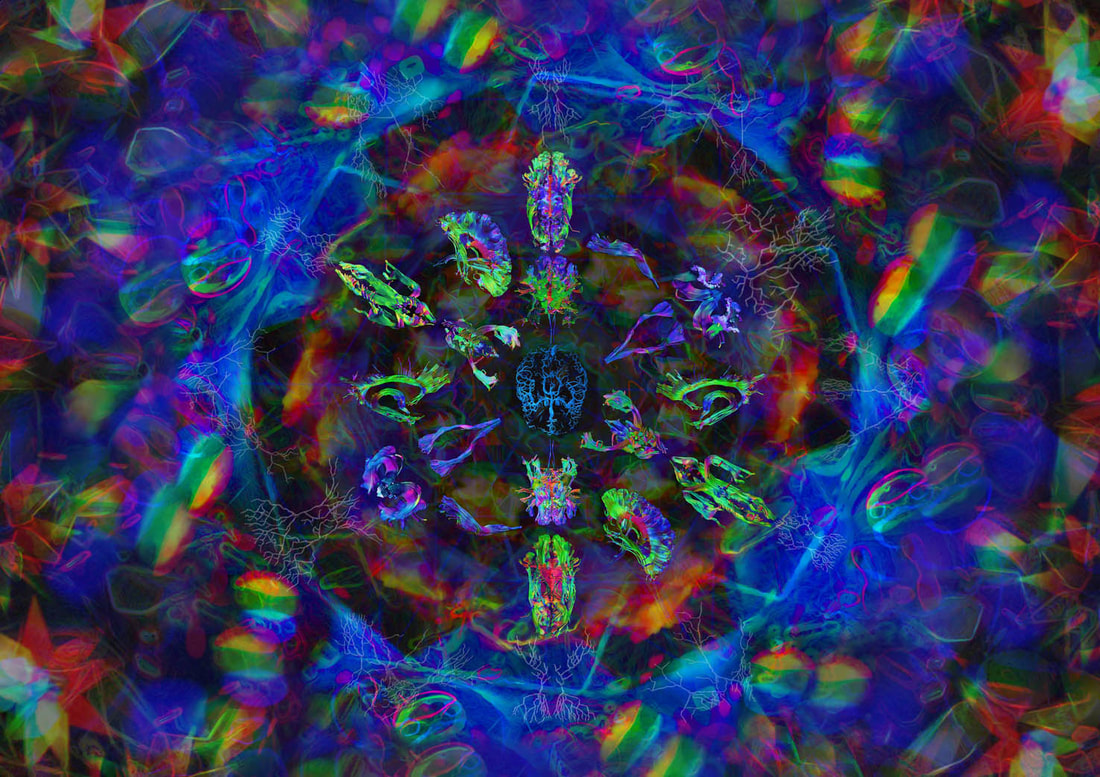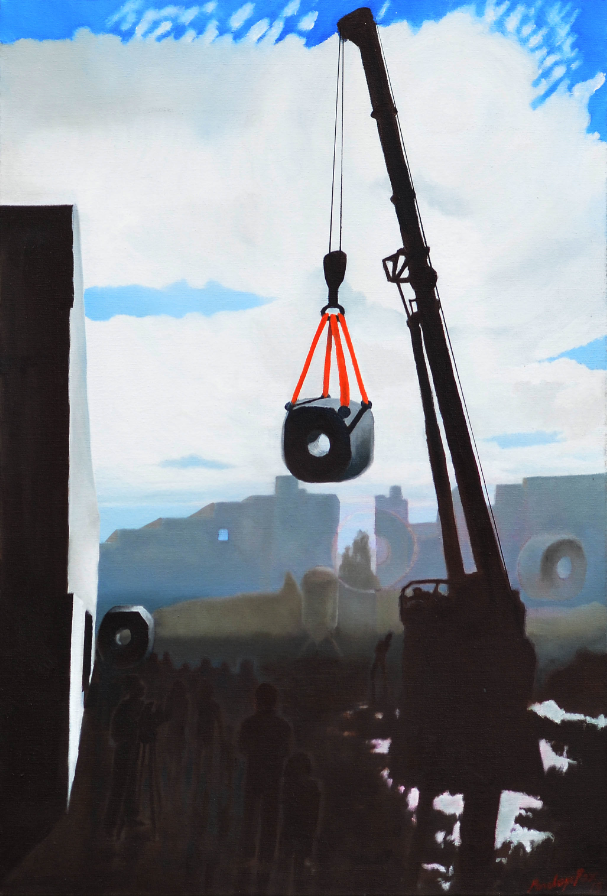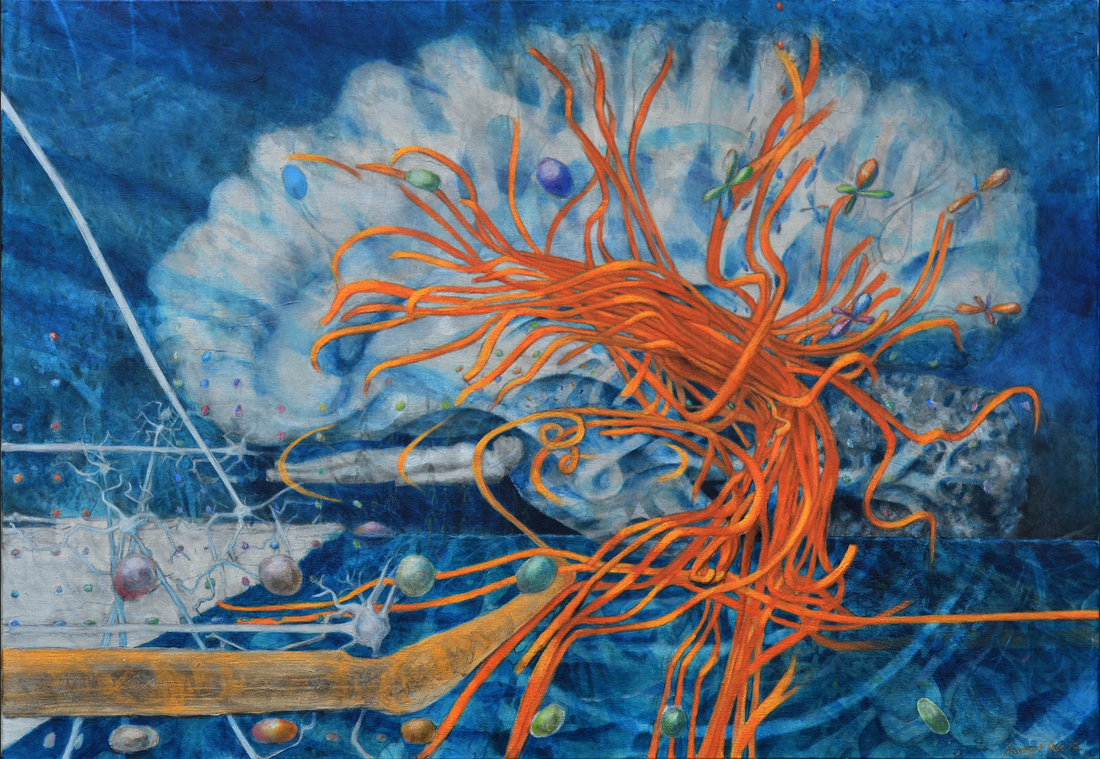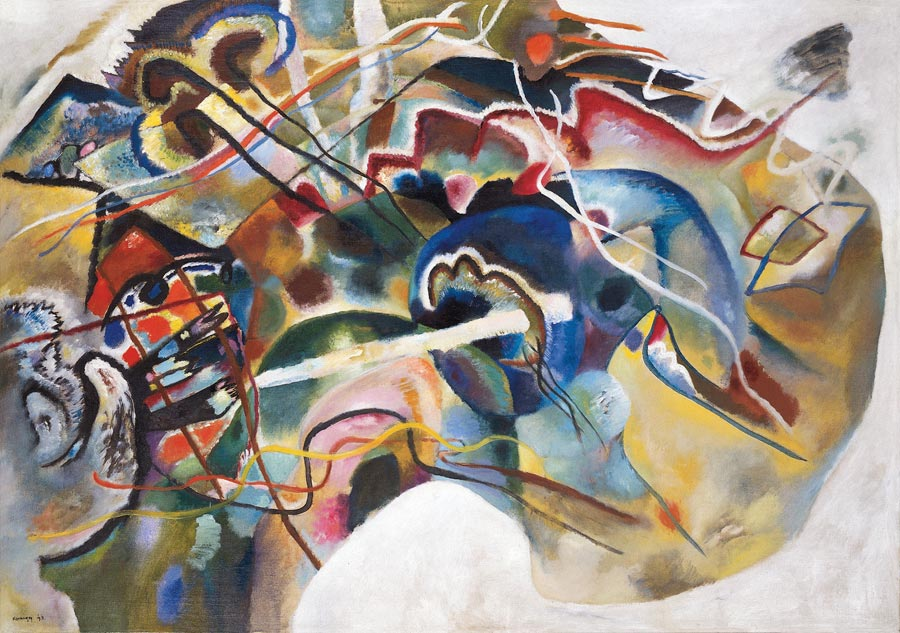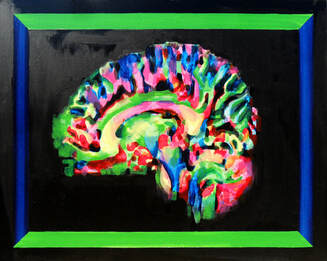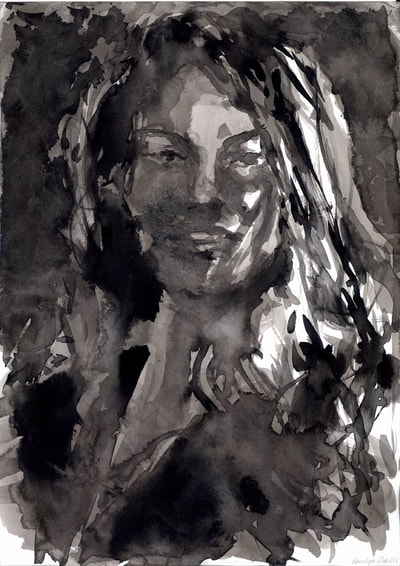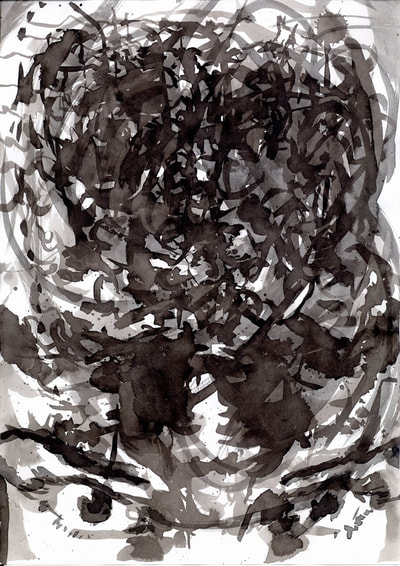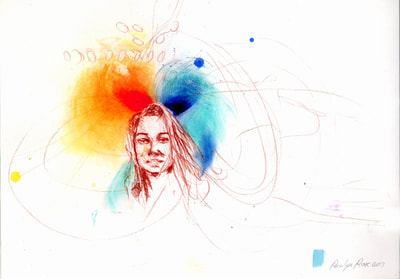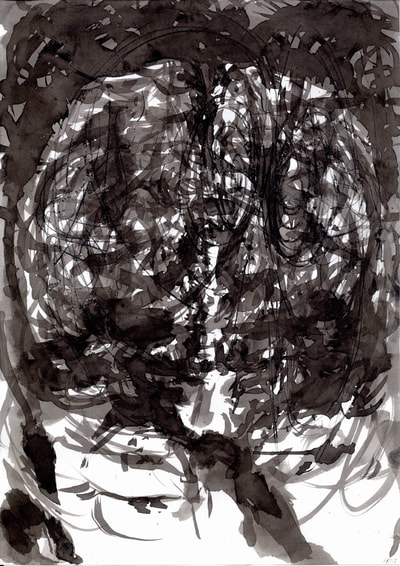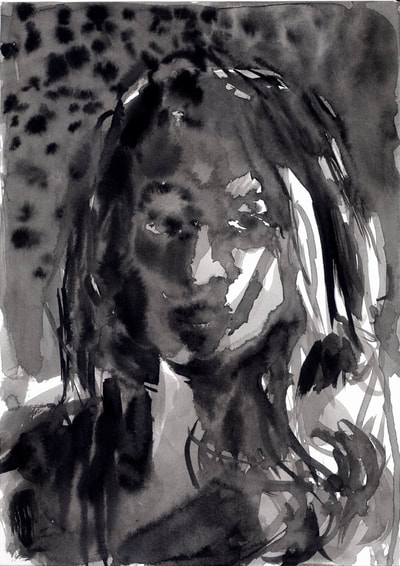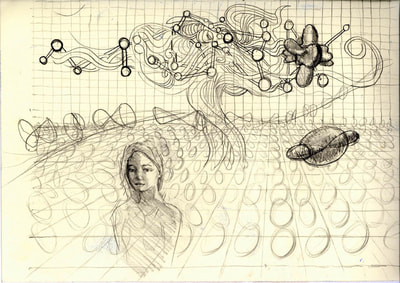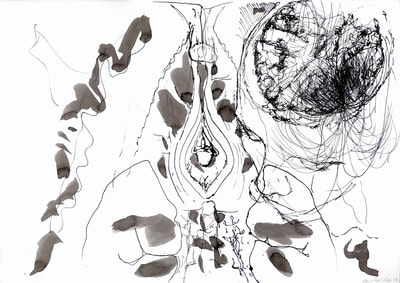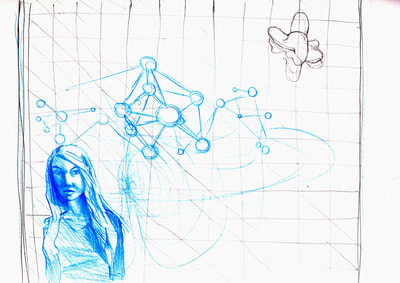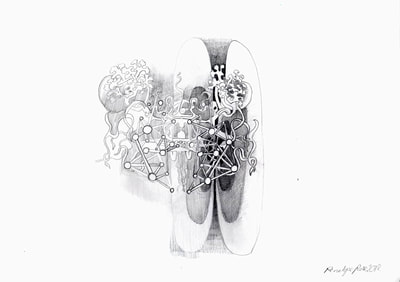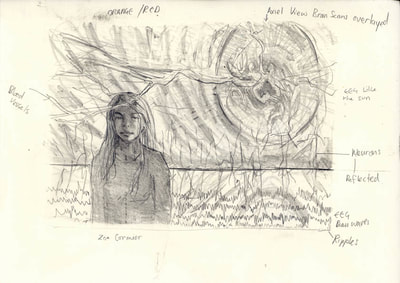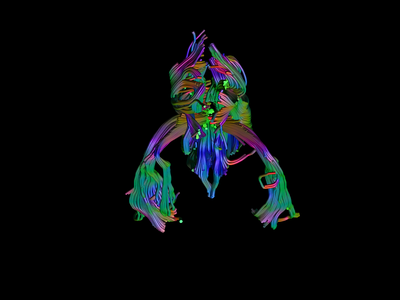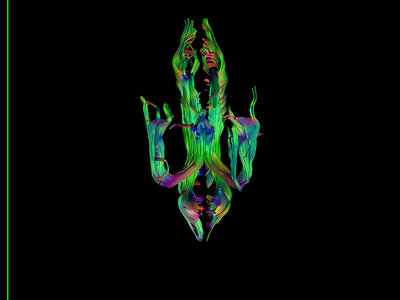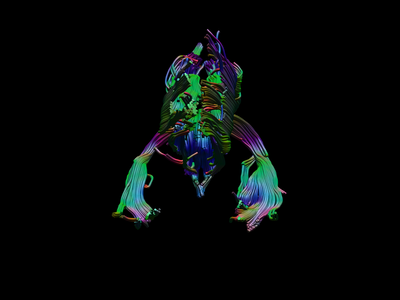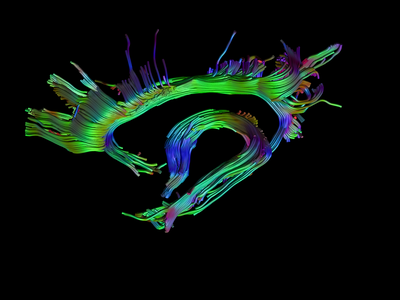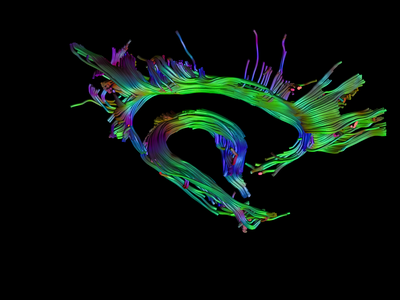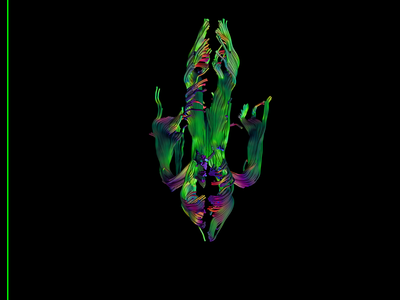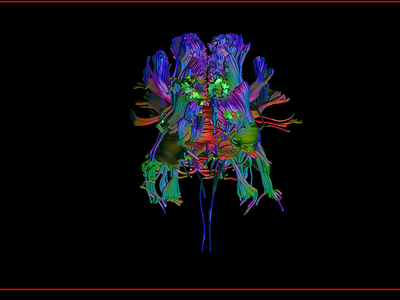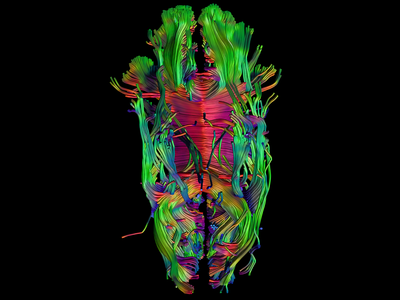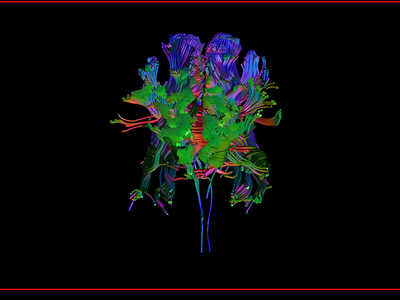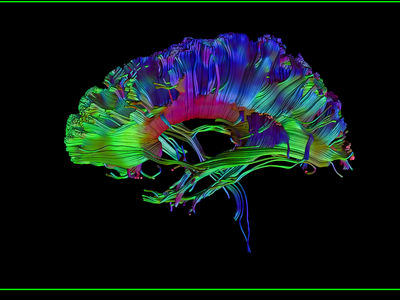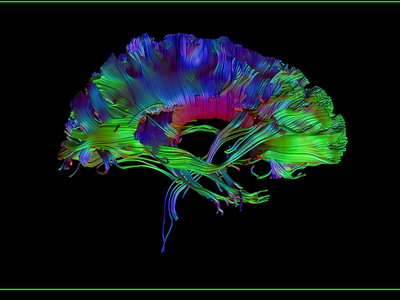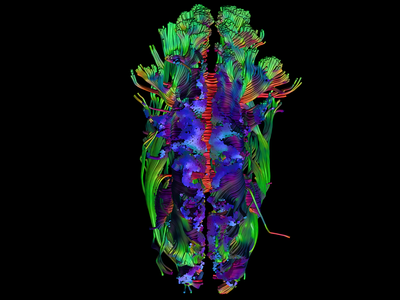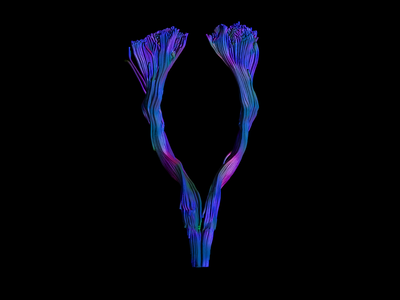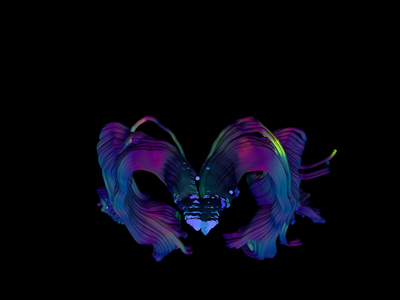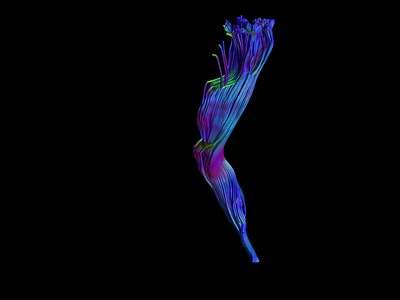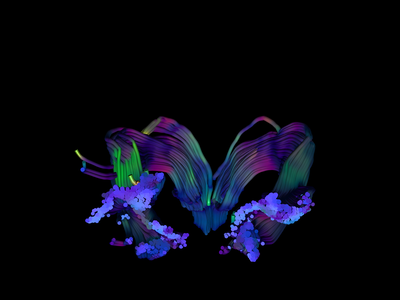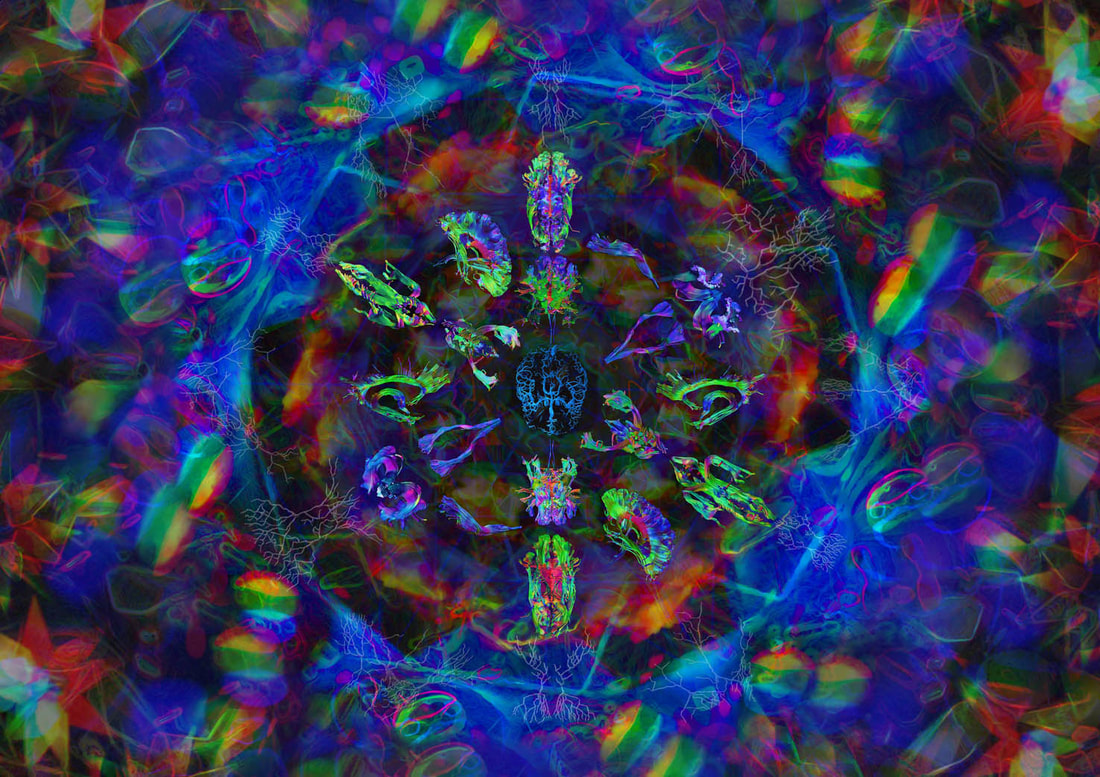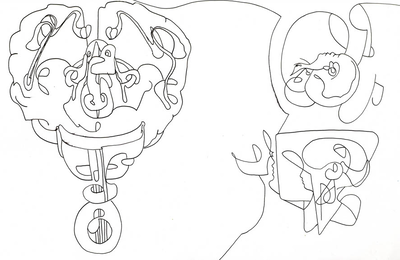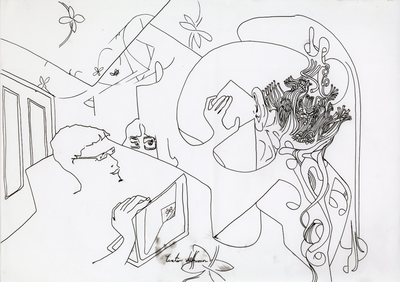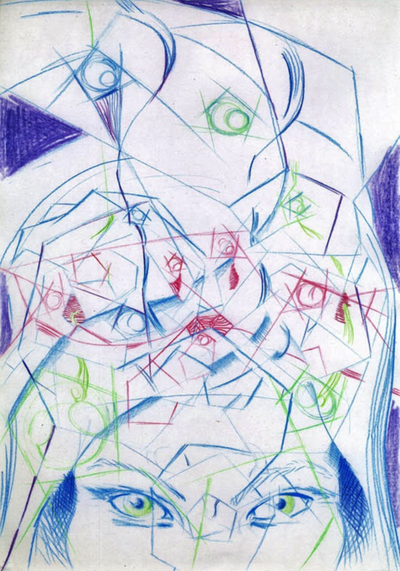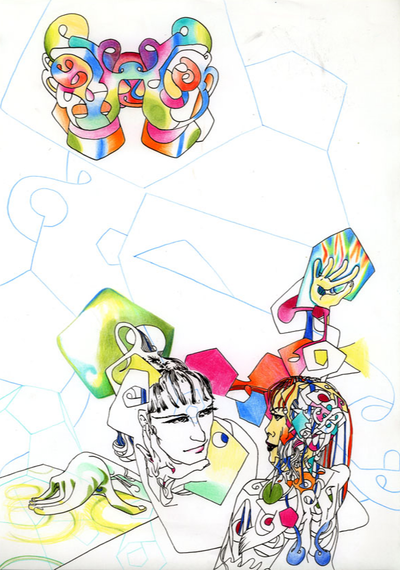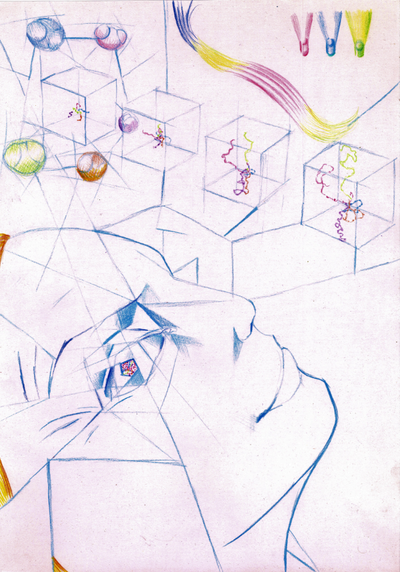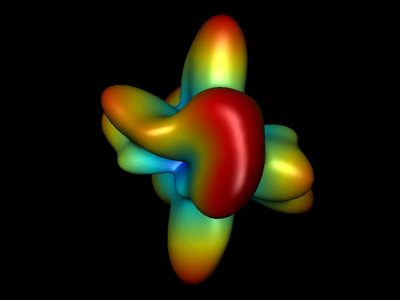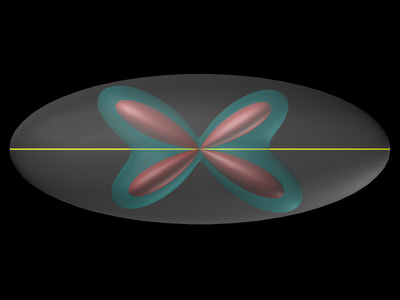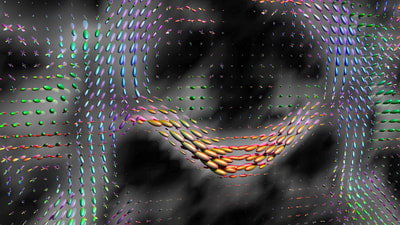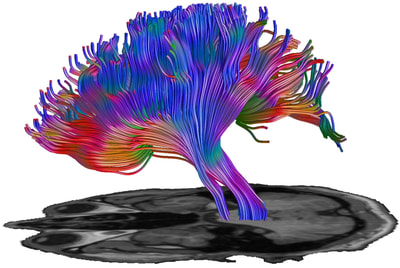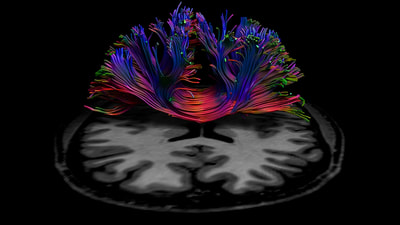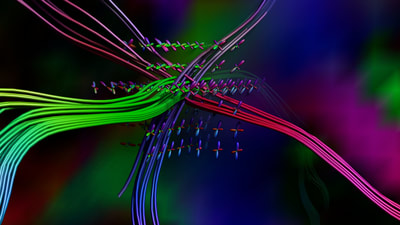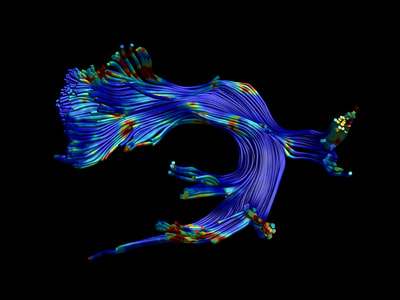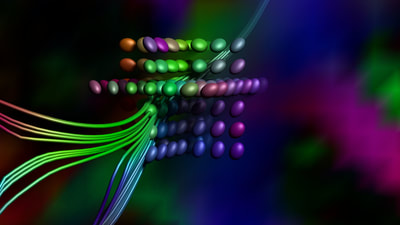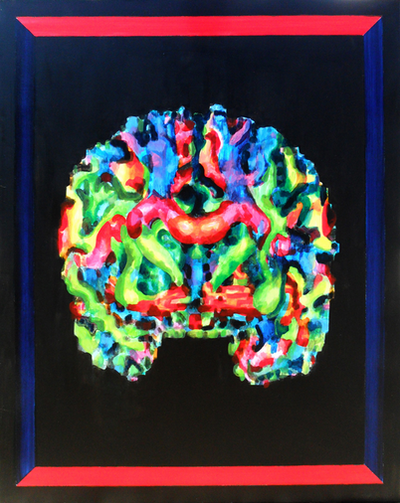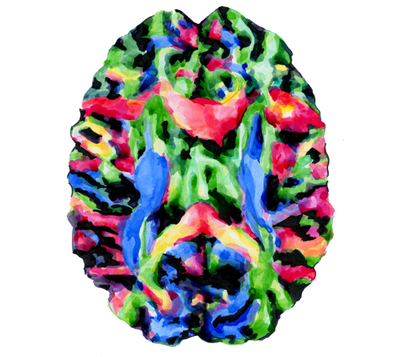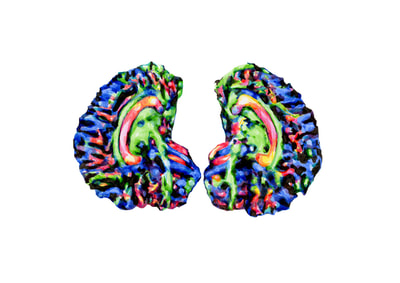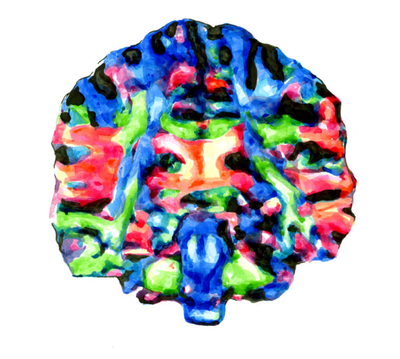Recalling the past, almost 3 years ago...
|
...and here in lies a great mystery...
He accepted the sculpture, stood up and held it up in one hand, high in from of us all and I recall he said ‘and here in lies a great mystery’, it was a beautiful moment. He continued to explain that It is the depth and breadth at which all life is interconnected that precedes this ‘great mystery’. From the tiny plankton we may as well say all life on earth depends and therein lies its great importance of study. Words to remember and ponder!
There is one question that for me stood out and the answer to which has enriched my sense of wellbeing and optimism for the future, I feel I am not alone in this sentiment as I heard it again talked about in the afternoons events.
The question was something along the lines of- ‘What are your thoughts for the future of the Earth and everything that lives on it?’
It felt as if there was a hesitance in the voice of the audience member, perhaps a little anxiety too, I believe we all felt that feeling a little, we all know how much we humans have messed up Earth and the problems we have caused as a species. Sir David Attenborough replied with sincerity and compassion (from my recollection it was along the lines of);
-Had you asked me 10 years ago I would have had a very different answer to the one I am telling you now. I would have been more sceptical. But now I have seen a change; When Australians noticed the hole in the ozone over their heads, a change commenced and since 1996 CFC’s have been banned. When whales diminished to the point of extinction, commercial whaling was banned in 1987. When I first started presenting, the oceans did not have many whales left, but now I see massive shoals, it is a change I have seen in my lifetime. Now we have plastics and the burning of fossil fuels to deal with, it is heart-breaking, however with; innovation, research, science and technology along with our ability to be curious, connect and communicate on a worldwide instantaneous level I feel that change again will happen. We are at a tipping point and the world of humans is now able to begin correcting the mistakes it has made. –
Hope for the future

For example, with regards to plastics; It is s a problem that caught the imagination of a Boyan Slat when he was a 16-year-old schoolboy from the Netherlands. I highly recommend finding out all about him.
Photographer Kirsten Holst www.kirstenholst.com
Boyan Slat
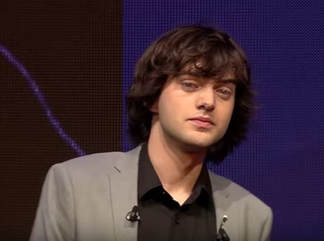
My part...
I had to be ready by 2.30pm to give my first talk in the Cosmoparticle Hub in front of the artsci-work, I was really frilled to be asked, I absolutely love having the chance to discuss the science that goes into the work and how it has come together, I was nervous too, I wanted to get it right for Hiranya Peiris, Andrew Pontzen and Chamkuar Ghag who had provided me with all the data. Here is a video showing, visually the development of the COSMOPARTICLE over a 5 months.
Explaining theCOSMOPARTICLE to Sir David Attenborough.
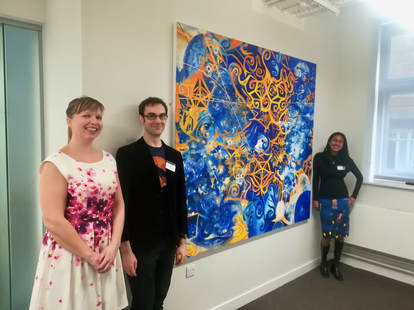
I explained as best I could, with a little help from the Dean Professor Ivan Parkin and encouraging looks from Hiranya and Andrew.
Find out more about Xenon and why it may help us find Dark Matter, click here.
Here is a photo by Anita Maguire of the Hiranya, Andrew and I all together->
Xenon or Plankton
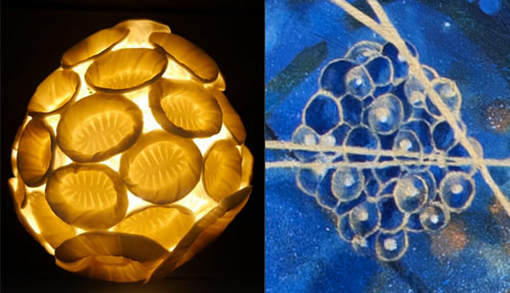
However, in hindsight, Sir David may have thought it looked a little like Blue Planet plankton created by Dr Samantha Gibbs. I should have asked him.
In Awe
I was in awe, the memory, a fuzz of excitement and before I knew it the tour was moving on, I had forgotten to give the letter from my daughter and gift I had for him. I quickly grabbed the gift and passed it to Sir David. He shook my hand again and thanked me for it and I managed to say, ‘you’re an inspiration, it’s been an honour to meet you’ words I am sure he hears many times every day.
The Cosmoparticle Painting
So that was the day I met Sir David Attenborough! What a memory, it has been fun recalling the day for this News blog I hope you have enjoyed reading it (especially thus far, well done! It is long!)
I will be back soon with news about COSMIC RAY, NEW SIGNALS and other projects happening right now.
For now, all the best, please feel free to post comments below about -if you had the honour- to meet Sir David Attenborough and also about how you are #goingplasticfree and/or #goingpaperfree.
Many thanks go to Anita Maguire for looking after me all day, Andrew and Hiranya for inviting me along and to Linda, Chris, Luísa, and Martin for sharing their knowledge and the brilliant conversations we had when some of us unwound at ‘Resting Hare’.
Penelope Rose Cowley
Artsci Creator
*********************************************************************************
Signed Limited Edition Prints are available here. -
COSMOPARTICLE Limited Edition Giclée
Museum Heritage 310gsm
Paper Size Width 26.4" Height 24"
Image Size Width 24" Height 21.607"
Limited editions giclée's of 75. Each is signed, titled and numbered with graphite pencil. All Giclée's printed using genuine Epson Ultrachrome HDR inks with 100+ years longevity on Museum Heritage 310gsm Fine Art textured paper.
Re-post from Nov 2019 (recalling the past)
NEW SIGNALS funded by the Engineering and Physical Sciences Research Council (EPSRC)
Their goal is to “understand brain and behaviour in health and disease through advanced imaging and cognitive methods” – but they also extend their work beyond the walls of the lab and into the realm of the studio.
CUBRIC commissioned three artists, of which I was one, to create “artsci” works that celebrate and reflect the research and images they produce. Through various mediums, each artist produced works inspired by the work of brilliant researchers, who collaborated with every artist to help them appreciate and communicate specific scientific concepts.
My work, a project we titled NEW SIGNALS, is finally complete. I would like to thank all the collaborators I had the pleasure to work with:
- Dr Leandro Beltrachini, Brain Imaging Group, School of Physics and Astronomy
- Professor Kevin Murphy Wellcome Trust Career Development Fellow,
- Dr Emma Tallantyre, Clinical Senior Lecturerin the Division of Psychological Medicine and Clinical Neuroscience in the School of Medicine
and
- Alex Goodall of the Leeds Teaching Hospital NHS Trust
I also had awe-inspiring exchanges with Fabrizio Fasano, Collaboration Scientist at Siemens Healthineers, advice from CUBRIC Ying Lin, Wellcome Trust Strategic Award WTSA and CUBRIC Project Manager and feedback and encouragement from the Director Professor Derek Jones of CUBRIC
These are the results of two years of research, collaboration and inspiration completed last year May 2018...
MINDSCAPE
150cm x 180cm
Acrylic on Canvas
2018
Professor Matt Griffin, Head of the School of Physics and Astronomy, recommended Dr Beltrachini and Dr Murphy to work with me for my NEW SIGNALS project. “It is interesting, the possibility of immortalising the alliance between Physics and CUBRIC in an artistic way,” commented Dr Griffin. As I had been commissioned recently by the School of Physics and Astronomy for 'Infinite LIGO Dreams' it was natural to carry on the connection.
ILLUMINATED TRACTOGRAPHY
Lightbox with transparent digital Artsci work
594mm x 841mm
2018
Working with collaborators Dr Emma Tallantyre and Alex Goodall, an intern from Leeds Teaching Hospital NHS Trust, we decided to create an 'artsci' work that expressed the forms and structures derived from the DTi and tractography images produced by the 3T MRi Connectome scanner. All these images are produced as a range of views – axial, sagittal and coronal - of so-called “Regions of Interest” (ROIs) in the brain. Emma, Alex and I chose each image with the aim of giving our audience insight into the beauty of tractography.
Emma suggested we use images of the corticospinal region, which in the brain branches into the corona radiata, internal capsule, fornix, and corpus callosum. I suggested we also use images of the cingulum and tallantyre, which I found to be aesthetically pleasing. In the end, we decided to merge images of the fornix and cingulum together. Aided by Goodall’s expertise with the programme ExploreDTi , we created three sets of stunning tractography maps.
THE MAGNET
36 inches by 24 inches
Oil on canvas
2017
BRAINTREE
100cm by 70cm
Acrylic on canvas
2018
Re-Post from Nov 2019 (remembering New Signals)
I feel that the freedom of artistic expression allows us to give form to cognition, using the smallest vibration and most detailed structures within us as source material. In this vein, I think of the words of Wassily Kandinsky (1866 – 1944):
It is never literally true that any form is meaningless and ‘says nothing’. Every form in the world says something. But its message often fails to reach us, and even if it does, full understanding is often withheld from us. And, properly speaking, form is the outward expression of this inner meaning.
- The language of Form and Colour : Concerning the Spiritual in Art
Is there a relationship between 'Picture With White Border' and my painting 'Sagittal Self Portrait 2013'?
Did he mirror his mind on canvas? As he put it, ‘Is form an outward expression of inner meaning?’
NEW SIGNALS does not attempt to answer these existential questions. But these existential ideas form part of my journey and creative process.
Cormier has a minor form of epilepsy, and Dr Leandro Beltrachini’s research at CUBRIC involves creating mathematical models to improve the medical care of epilepsy. I therefore took the view that Cormier would be an interesting person to speak to about how her seizures colour her experiences of the world.
I travelled from Cardiff to London to gain insights into her perspective. You can see my sketches of her on the NEW SIGNALS image page and here.
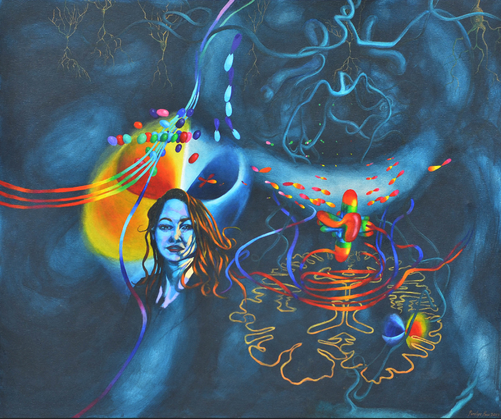
ILLUMINATED TRACTOGRAPHY
We arranged to extract tractography data from the 3T MRi Connectome using the 'ExploreDTi' programme, which processes the data gathered in tractography. We enlisted the help of Alex Goodall, an intern with the local NHS trust who was working with CUBRIC to improve his technical skills with ‘ExploreDTi’.
Working closely with Goodall, Dr Tallantrye and I collected a variety of different views of each of the tractography maps using the ExploreDTi programme. This allowed us to turn the nerve cell tracts into spaghetti-like tubes using toggled lighting effects, giving shadows and highlights to each tract, creating texture and life. The map became soaked in hues of red, green, blue and a whole rainbow of colours in between, each colour relating to one direction in the three-dimensional space 3-D space traversed by water molecules. Here are a selection of the stunning Regions of Interest (ROIs) we created together.
The whole journey has been so challenging and so stimulating, I will probably still be discussing it in years to come. It is another chapter in my journey merging art and science.
Thankfully, the NEW SIGNALS story is not over yet: all the artsci works will eventually be placed on permanent display at the CUBRIC centre in Cardiff. Plus, over the next few years a touring exhibtion of all the works commissioned from myself and other artists will be toured around the UK before they then take their final resting place at CUBRIC.
For now I would to give special acknowledgements to...
Director Professor Derek Jones for inviting me to participate in the project, and for all the conversations and encouragement he gave me I had over the years since 2012.
Project Manager Ying Lin Wellcome Trust Strategic Award WTSA for all the advice, patiences, understanding and recommendations.
Editor Zoe Cormier, for making sense of my words, sharing her experiences and allowing me to make her a part of MINDSCAPE.
Scientists Dr Leandro Beltrachini of the Brain Imaging Group in the School of Physics and Astronomy, and Dr Kevin Murphy, Wellcome Trust Career Development Fellow. I want to thank them both for our conversations and for explaining their research.
Researchers Dr Emma Tallantyre, Clinical Senior Lecturer in the Division of Psychological Medicine and Clinical Neuroscience at the School of Medicine, and Alex Goodall of the Leeds Teaching Hospital NHS Trust. I am thankful to both for their enthusiasm, for sharing their research, and for creating beautiful tractography images.
Scientist Fabrizio Fasano, Collaboration Scientist at Siemens Healthineers and CUBRIC. I want to thank him for sharing his research and conversations.
And to The PROVIDI Lab, headed by Alexander Leemans, which focuses on processing, analyzing, and visualizing diffusion MRI data for investigating microstructural and architectural characteristics of tissue organization. I have not yet had the pleasure to meet Alexander yet, but I would like to thank him for giving me permission to integrate PROVIDI Lab images into NEW SIGNALS.
Re-post from Nov 2019
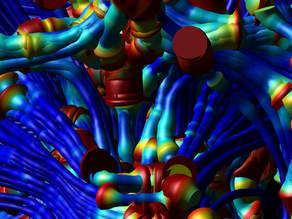
I have been creating pieces in the genre known as “artsci” since 2012, when I first met Professor Derek Jones, Director of the Cardiff University Brain Research Imaging Center (CUBRIC) at a local art exhibition where his team present their visual data – images of the brain – as art.
This inspired me to bring scientific ideas to life through my painting and illustrations. For the past six years I have been commissioned to create and exhibit a range of artsci pieces that explore subjects ranging from neuroscience to magnetism and astronomy. I find the beauty in the data irresistible.
Memory Sketches of Conversations at CUBRIC in 2012...
I have been lucky enough to have a glimpse of the potential of the research at CUBRIC. Inspired by their incredible images of the brain, with every new piece of knowledge I gain from my collaborators, I find myself meditating on the composition of thoughts themselves. Such as the “spin echo” of a hydrogen atom’s proton as it vibrates inside a magnetic resonance imaging (MRi) machine. Or how through “tractography” we can map the nerve cell tracts in the brain by measuring the movement of water molecules as they travel along neurons, pushed by magnetic fields. In a way, it feels like we can see the shape of our minds, and I find it incredible and very inspiring.
A selection of visual data from CUBRIC...
PROcessing & VIsualization in Diffusion Imaging (PROVIDI) Lab
http://www.providi-lab.org/image-gallery.html
The colours seen in diffusion tensor imaging (DTI) scans and tractography images are not just pretty to look at: each hue represents one direction in the three-dimensional space in which echoing protons flip with magnetic pulses. With each pulse, they move along, through, in and out of axons, white matter, grey matter and the vortices of the brain. I find these to be incredibly beautiful in their own right. I have create many artsci work regarding DTi.
Selection of macro diffussion tensor artsci works in pen and ink and oil on canvas:
Leandro explained to me how he works with electroencephalogram (EEG) sensors, magnetoencephalography (MEG) scanners, and the university’s new 3T connectome scanner to map the microstructures of the brain. With these he develops “numerical models for representing physical processes in arbitrary domains and conditions” – a complex way to describe something known as the “forward problem” .
I also collaborated with Dr Emma Tallantyre, Clinical Senior Lecturer in the Division of Psychological Medicine and Clinical Neuroscience at Cardiff University, whom I was introduced to by CUBRIC’s Project Manager Ying Lin of the Wellcome Trust. Emma can be seen in this video:
Cardiff Brain Scanner from Paper Cow on Vimeo.
Emma can be seen in this video at 2:44 discussing a scan with a volunteer in July 2017. In this video, we can see some of the first highly detailed scans from the new 3T microstructure scanner. It was very inspiring to witness. We were also joined by Alex Goodall, an intern from the NHS Trust, who was there to improve his technical skills with the ‘ExploreDTi’ programme, which processes the data gathered in tractography.
Archives
November 2023
February 2023
September 2021
March 2021
February 2021
January 2021
December 2020
November 2020
October 2020
September 2020
July 2020
June 2020
May 2020
April 2020
March 2020
February 2020
January 2020
September 2019
August 2019
July 2019
May 2019
April 2019
March 2019
January 2019
November 2018
October 2018
September 2018
August 2018
May 2018
April 2018
March 2018
February 2018
October 2017
September 2017
August 2017
July 2017
May 2017
March 2017
February 2017
July 2016
June 2016
January 2016
November 2015
October 2015
September 2015
July 2015
June 2015
April 2015
March 2015
February 2015
January 2015
December 2014
November 2014
October 2014
September 2014
August 2014
July 2014
June 2014
May 2014
April 2014
March 2014
January 2014
December 2013
October 2013
August 2013
July 2013
